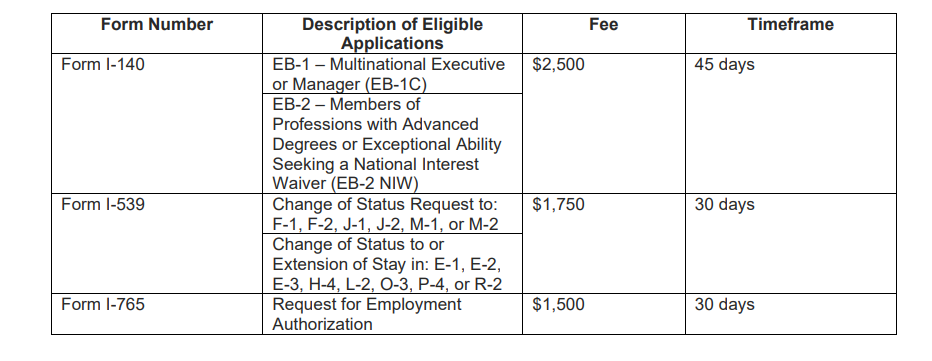Expansion of Premium Processing and What to Expect in 2022
On March 30, 2022, U.S. Citizenship and Immigration Services (USCIS) published a final rule entitled, Implementation of the Emergency Stopgap USCIS Stabilization Act. By this rule, USCIS makes several changes to the premium processing services it currently offers. Premium Processing Service offers expedited adjudication of certain immigration applications and petitions. Some of the changes to the program are expected as early as June 1, 2022. However, an official update from USCIS is expected in the near future regarding the timeline of premium processing additions.
Under the new rule, a 45-day premium processing timeframe will become available for EB-1 petitions of multinational executives or managers (EB-1C) and EB-2 petitions based on National Interest Waiver (EB-2 NIW).
A 30-day premium processing timeframe will also become available to certain Forms I-539
Change of Status/Extension of Status Applications and the Form I-765 Employment Authorization Application.
Below is the proposed fee and timeframe for new premium processing additions.
However, all these new changes are not going to happen overnight. USCIS has indicated its hopes to expand premium processing to the additional Form I-140 visa classifications (EB-1C and EB-2 NIW) in FY 2022. As to the Form I-539, USCIS anticipates accepting premium processing requests from F–1, F–2, J–1, J–2, M–1 and M–2 applicants in FY 2022 and from E–1, E–2, E–3, L–2, H–4, O–3, P–4 and R–2 applicants in FY 2025.
In other words, USCIS will prioritize implementation of premium processing services for the employment categories and for students and exhange visitors, while others who require an EAD may need to wait until FY 2025 in order for USCIS to make the necessary organizational adjustments not to adversely affect the processing times for other immigration applications.
For a list of immigration services that our firm provides, please visit our website.

